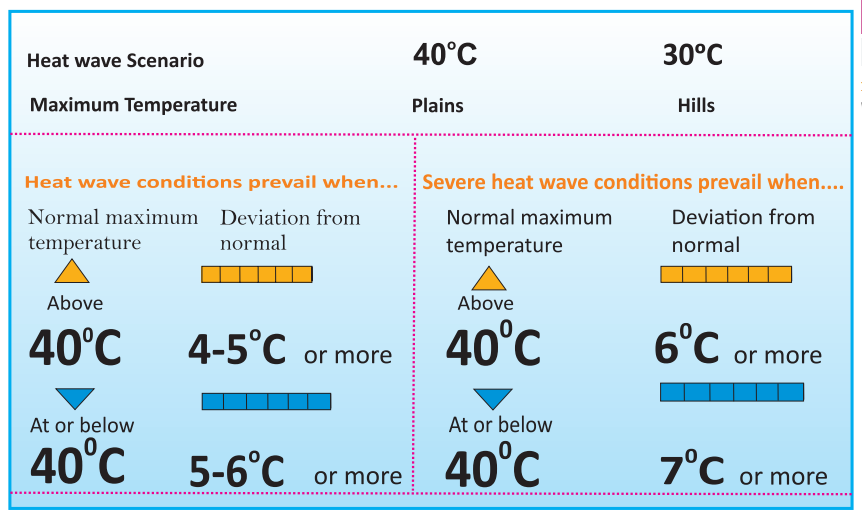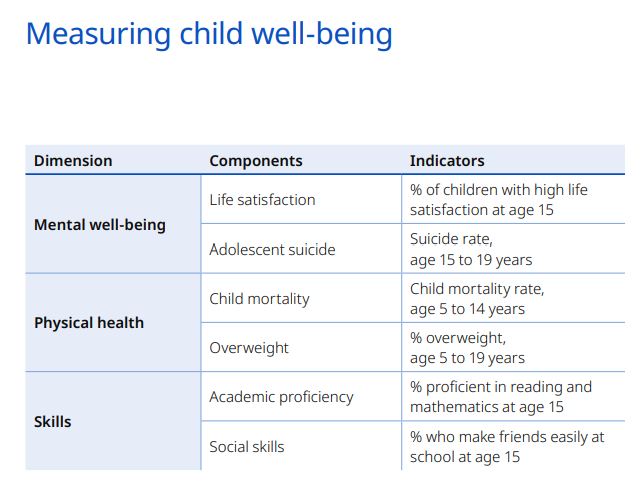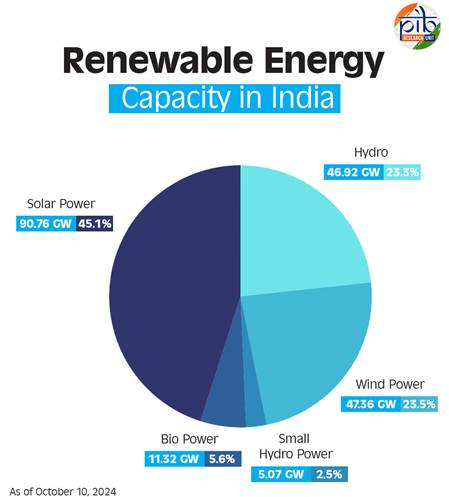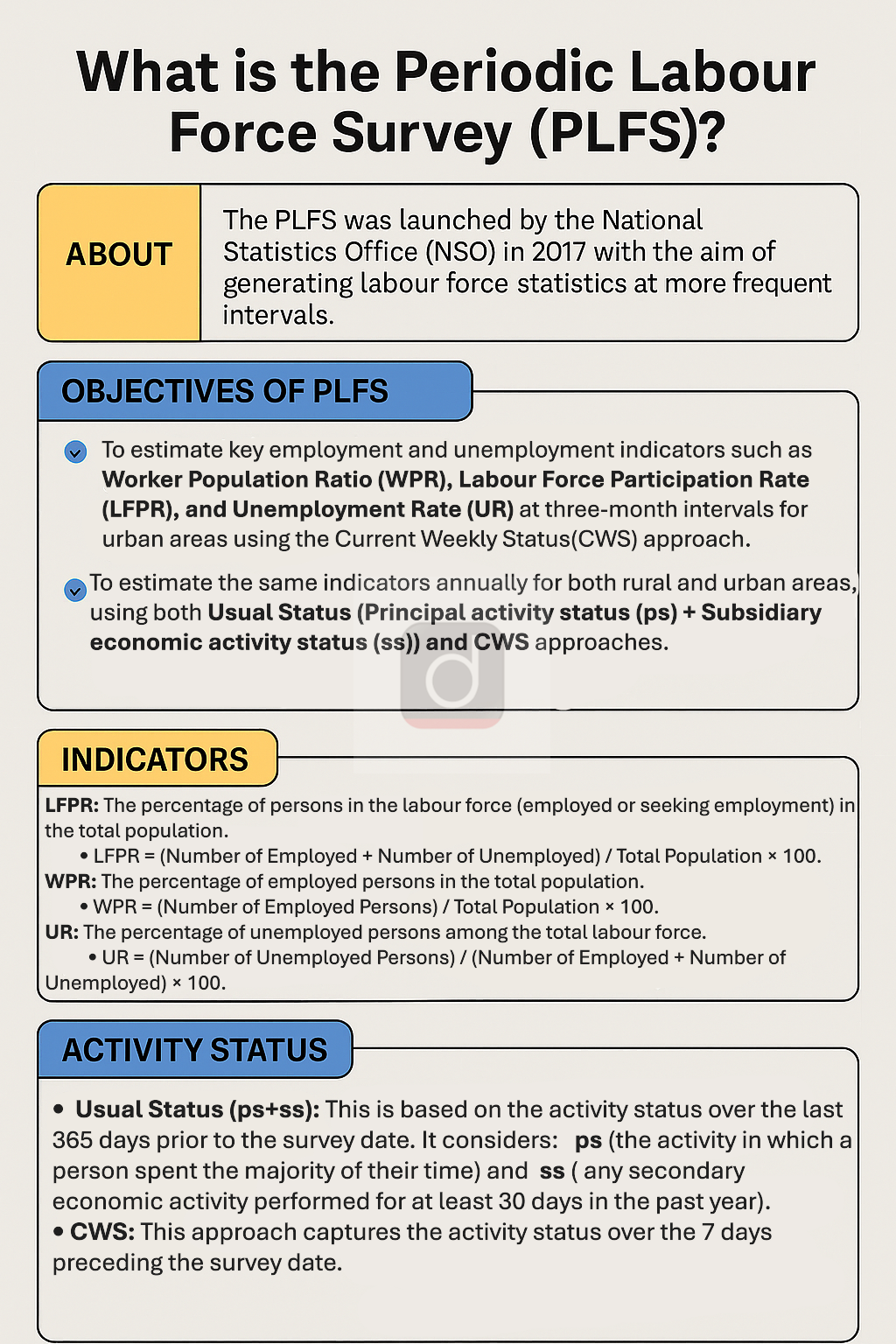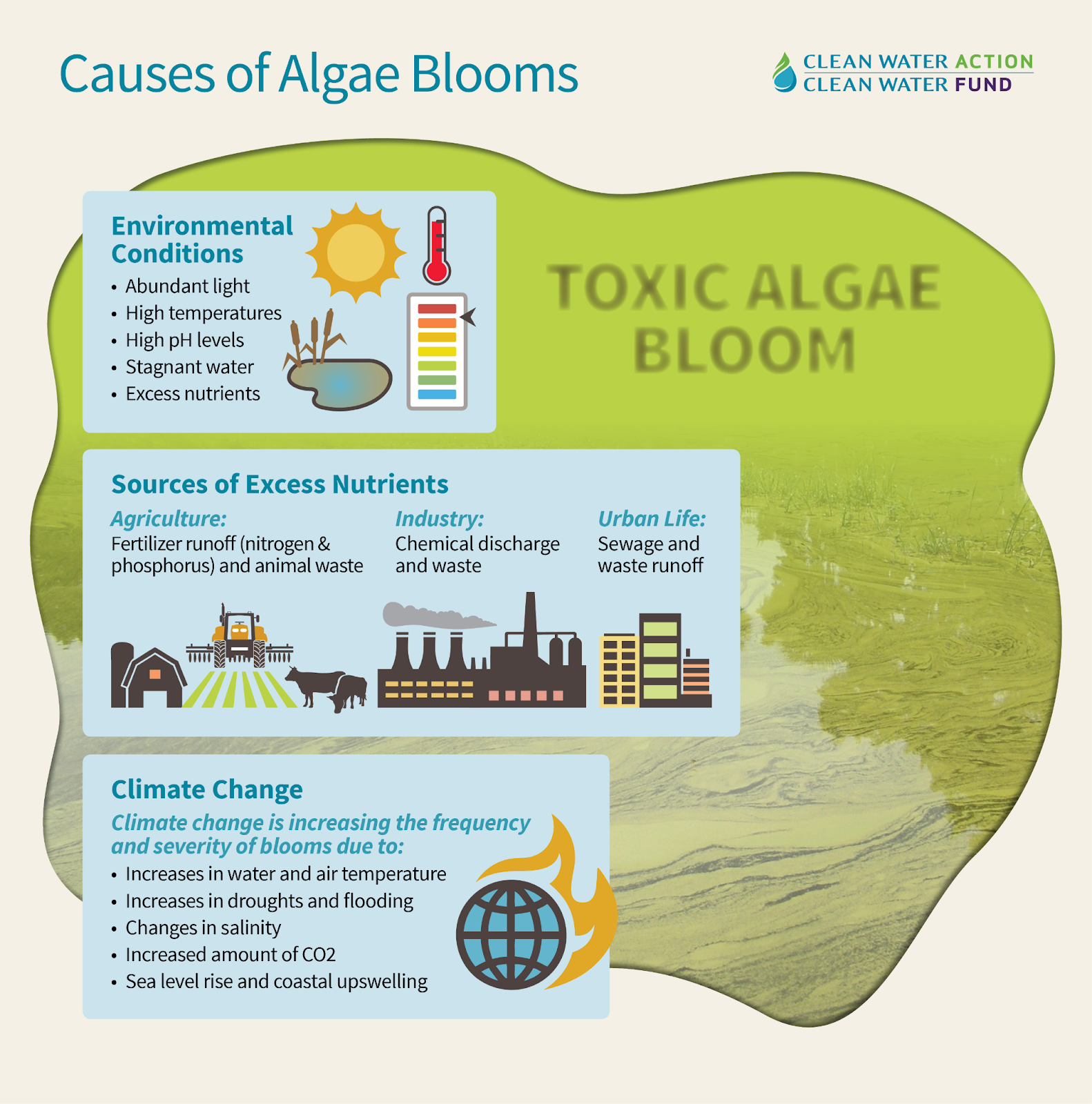Indian Economy
Gig Economy
For Prelims: Gig Workers, NITI Aayog, E-commerce, Artificial Intelligence (AI), Minimum Wage, Code on Social Security, 2020.
For Mains: Role of gig economy in India’s economic growth, Key issues associated with the gig economy in India and way forward.
Why in News?
The gig workers' meeting on "Current Developments, Challenges, and the Way Forward," organized by the Gig Workers Association, highlighted critical issues within India’s gig economy and recommended the establishment of minimum wages, social security, and legal protections for gig and platform workers.
- It also called for the establishment of tripartite welfare boards at both state and national levels, including representatives of workers, employers, and the government.
What is the Gig Economy?
- About: The new Labour Codes of 2019 defines a gig worker as “A person who performs work or participates in a work arrangement and earns from such activities outside of traditional employer-employee relationship”.
- It is a labor market of short-term, flexible jobs often enabled by digital platforms.
- Workers, as freelancers or independent contractors, are paid per task rather than through full-time contracts. Common activities include freelance services, food delivery, and digital work.
- Status of India’s Gig Economy: A NITI Aayog report estimates 7.7 million gig workers in India in 2020–21, projected to reach 23.5 million by 2029–30, mostly in medium-skilled jobs.
- Key Factors of Growth:
- Growing Digital Access: India has over 936 million internet users, with rapid growth in rural areas. Around 650 million smartphone users, supported by falling prices, are expanding access, strengthening the gig economy.
- E-Commerce Boom: The growth of startups and e-commerce is driving demand for flexible gig workers in content creation, marketing, logistics, and delivery.
- Rising Demand for Convenience: Urban consumers’ demand for quick services like food delivery and e-commerce boosts gig opportunities in delivery and customer support.
- Low-Cost Labor: A surplus of semi-skilled labor, high unemployment, and weak social security drive many into low-paid gig work as a survival strategy.
- Shift in Work Preferences: Younger generations favor flexibility and work-life balance, finding gig work attractive for its project-based, remote, and flexible options.
- Segment:
What is the Significance of the Gig Economy?
- Opportunities for Gig Workers: The gig economy provides flexible work that helps balance personal and professional life, especially benefiting women, while enhancing skills and earning potential.
- Business Friendly: Businesses gain cost-effective, scalable labor and can hire skilled workers for short-term projects, boosting productivity without long-term commitments.
- Economic Growth and Job Creation: By 2030, India’s gig economy could support 90 million jobs, handle USD 250 billion in work volume, contribute 1.25% to GDP, and make up 4.1% of the workforce.
- Inclusive Growth: Initially dominated by high-income professionals, the gig economy now offers alternative income and flexible jobs to entry-level workers and freshers, especially in growing Tier-II and Tier-III cities.
- Future Potential with Technology Integration: The gig economy is set to drive economic growth and job creation, boosted by Artificial Intelligence (AI), predictive analytics, and digital innovation enhancing gig work’s efficiency and reach.
- Supporting the Informal Economy: Many gig workers in India, including drivers and delivery staff from informal sectors like agriculture, find additional work opportunities through platforms like Zomato and Swiggy.
What are the Major Issues Affecting the Gig Economy in India?
- Lack of Legal Protections: Gig workers, classified as independent contractors, lack essential rights like minimum wage, paid leave, and health benefits, making them vulnerable to exploitation.
- Laws like the Contract Labour Act, 1970, and Employment Compensation Act, 1923, are inadequate for gig workers due to the flexible and decentralized nature of platform work.
- Employment Instability: Gig workers face job insecurity as opaque algorithms and customer ratings control their work, pay, and employment, leading to unpredictable income.
- A 2024 NITI Aayog report found 90% of gig workers lack savings and face high vulnerability, while a 2023 Fair Work India study reported average monthly earnings of Rs 15,000–Rs 20,000 only.
- Inadequate Government Response: The Code on Social Security, 2020, mandates a National Social Security Board for gig workers’ welfare, but slow implementation and weak enforcement leave most workers without benefits or protection.
- The "Prisoners on Wheels" report found that 83% cab drivers work over 10 hours a day.
- Gender Disparities: Women gig workers face more harassment, lack grievance support, and often experience underpayment, limited opportunities, and unsafe conditions, worsening gender inequality.
- Timely Payments: Over 25% of gig workers face job dissatisfaction due to delayed payments, stressing the need for timely, transparent, and shorter payment cycles to avoid financial strain.
- Algorithmic Control: The lack of transparency and accountability in algorithmic management creates a severe power imbalance, with workers facing arbitrary decisions like unexplained account deactivations and no clear recourse, exposing platform exploitation.
India’s Initiatives Related to Gig Workers
What Steps Can India Take to Strengthen and Enhance the Gig Economy?
- Legal Reforms: Urgent implementation of Labour Codes for the gig economy is needed through clear, enforceable rules, establishing tripartite welfare boards, ensuring social security, and avoiding overlaps with existing frameworks.
- India could follow countries like the Netherlands, UK, and California by reclassifying gig workers as employees to guarantee social security benefits.
- Portable Benefits System: A portable benefits system offering health insurance, retirement, and unemployment benefits across platforms would enhance gig workers’ stability and financial security.
- Improved Working Conditions: India should require gig platforms to provide transparent grievance mechanisms, enabling workers to report unfair practices and ensuring timely resolution under labor authority oversight.
- Companies like Amazon, Flipkart, Zomato, and Swiggy are improving worker conditions with safety gear, resting areas, and water access. Continued focus on welfare will ensure a sustainable gig economy.
- Skill Development and Upskilling: Promote skill-building initiatives and collaborations with vocational institutes to equip gig workers with the necessary skills to transition into higher-paying roles and entrepreneurial ventures.
- Launch digital literacy programs in rural areas and collaborate with platforms on tailored training to empower workers and reduce exploitation.
- Formalization of Gig Economy: India can better integrate gig workers by expanding and improving the e-Shram portal to provide digital IDs linking them to welfare schemes, benefits, and job opportunities.
Conclusion
India’s gig economy is a powerful driver of job creation, economic growth, and inclusive opportunities, particularly for women and youth. However, to ensure its sustainability, there is an urgent need for comprehensive legal protections, transparent algorithmic governance, and enhanced social security measures, supported by focused skill development and policy reforms.
|
Drishti Mains Question: Discuss the significance of the gig economy in India and the major challenges faced by gig workers. |
UPSC Civil Services Examination, Previous Year Question (PYQ)
Prelims
Q. With reference to casual workers employed in India, consider the following statements:
- All casual workers are entitled for Employees Provident Fund coverage.
- All casual workers are entitled for regular working hours and overtime payment.
- The government can by a notification specify that an establishment or industry shall pay wages only through its bank account.
Which of the above statements are correct?
(a) 1 and 2 only
(b) 2 and 3 only
(c) 1 and 3 only
(d) 1, 2 and 3
Ans: (d)
Mains
Q. Examine the role of ‘Gig Economy’ in the process of empowerment of women in India. (2021)


Geography
Geographical and Climatic Factors Influencing Heatwaves
For Prelims: Heatwaves, Black soil, El Niño, Heat Action Plans, India Meteorological Department (IMD)
For Mains: Impact of Climate Change, Heatwaves and Heat Action Plans in India, Heat Islands and Cooling Solutions
Why in News?
Andhra Pradesh and Telangana experience intense heat waves during summer due to a combination of unique geographical features and climatic conditions.
How do Geographical and Climatic Factors Influence Heat Waves?
- Geographical Factors:
- Latitude and Solar Intensity: Areas near the Tropic of Cancer, such as Andhra Pradesh and Telangana, receive intense solar radiation during summer when the sun is nearly overhead.
- This vertical solar incidence increases ground heating and raises temperatures significantly.
- Terrain and Surface Characteristics: Rocky and barren landscapes, such as the Deccan plateau in Telangana, absorb more heat compared to vegetated or moist surfaces.
- Black soils prevalent in these regions also retain heat longer, contributing to elevated daytime temperatures.
- Conversely, regions with dense vegetation or irrigated agricultural land experience cooling due to evapotranspiration (sum of all processes by which water moves from the land surface to the atmosphere via evaporation and transpiration) .
- Landlocked Regions: Landlocked regions, such as most of Telangana, experience higher heatwave risks due to the absence of nearby water bodies, leading to greater temperature variations, a pattern also observed in north-central and northwest India.
- The coastal regions experience moderated temperatures due to cooling effects from large water bodies, which have higher heat capacity and promote evaporative cooling.
- Urban Heat Islands, characterized by high population density, extensive concrete and asphalt surfaces, and limited vegetation, absorb and retain more heat, creating localized zones of elevated temperatures, which lead to more intense heat waves.
- Latitude and Solar Intensity: Areas near the Tropic of Cancer, such as Andhra Pradesh and Telangana, receive intense solar radiation during summer when the sun is nearly overhead.
- Climatic Factors:
- Rainfall and Humidity: Low pre-monsoon rainfall leads to dry soils and reduced moisture, limiting evaporative cooling (process of removing heat from a surface due to the evaporation of water).
- Minimal cloud cover increases solar radiation, raising surface temperatures leading to intense heat waves.
- High humidity worsens heat stress by reducing sweat evaporation, raising the heat index.
- Wind and Atmospheric Conditions: Weak winds during heat waves prevent heat from dispersing, causing it to build up near the ground and intensify surface temperatures.
- Stable atmospheric conditions can trap heat close to the ground (temperature inversion), prolonging and intensifying heatwaves.
- High atmospheric conditions, such as anti-cyclonic flows (high-pressure systems), promote clear skies, dry air, and sinking air masses that enhance surface heating and heatwave development.
- El Niño effect, and phenomena like the "Loo" wind contribute to the frequency and intensity of heat waves.
- El Niño weakens the monsoon-driving trade winds. This leads to reduced cloud cover and lower rainfall, causing dry soils and higher surface temperatures creating ideal conditions for heatwave formation and intensification.
- "Loo," is a hot, dry, and dusty wind that blows during the summer months
- Rainfall and Humidity: Low pre-monsoon rainfall leads to dry soils and reduced moisture, limiting evaporative cooling (process of removing heat from a surface due to the evaporation of water).
What are Heat Waves?
- About: Heat waves are periods of unusually high temperatures relative to the normal climate of a region.
- The threshold for declaring a heat wave varies by location, depending on the region’s historical temperature patterns.
- In India, Heat Waves occur mainly from March to June and in some rare cases even in July. The peak month of the heat wave over India is May.
- Heat Waves are not officially classified as natural disasters under the Disaster Management (DM) Act of 2005 despite their severe impacts.
- India Meteorological Department (IMD) Criteria for Declaring Heat Wave:
|
Region/Condition |
Heat Wave |
|
Plains |
Max temperature ≥ 40°C |
|
Hilly Regions |
Max temperature ≥ 30°C |
|
Coastal Stations |
When the maximum temperature departure is 4.5°C or more from normal, and provided the actual maximum temperature is 37°C or above. |
|
Based on Departure from Normal |
Heat Wave: Departure from normal is 4.5°C to 6.4°C Severe Heat Wave: Departure from normal is > 6.4°C |
|
Based on Actual Maximum Temperature |
Heat Wave: When actual maximum temperature ≥ 45°C Severe Heat Wave: When actual maximum temperature ≥ 47°C |
|
Spatial & Temporal Condition |
To declare as a heatwave the criteria must be met at minimum 2 stations in a Meteorological subdivision for at least 2 consecutive days. |
What is the Impact of the Heat Waves?
- Impact on Human Health: Heatwaves lead to a surge in illnesses such as heat cramps, edema (swelling), syncope (fainting), heat exhaustion, and life-threatening heat stroke.
- The elderly, outdoor laborers, low-income groups, and people with pre-existing health conditions are especially at risk.
- According to the "Heat Watch 2024" report, 733 heatstroke deaths were reported across 17 Indian states between March and June.
- Economy: Workers in industries like construction, mining, power plants, and refineries experience prolonged heat exposure, increasing health risks and reducing efficiency.
- High heat exposure results in the loss of up to 162 working hours annually for laborers engaged in heavy physical work, significantly impacting economic productivity.
- Heatwaves reduce air density, requiring aircraft to use longer take-off distances, simulating high-altitude conditions and increasing operational expenses and energy consumption.
- Environmental Damage: Increased forest fires due to heat waves harm ecosystems and human settlements.
- Forest Survey of India has estimated that 21.4% area under forest is vulnerable to forest fires
- Heatwaves accelerate evaporation, reducing water availability and affecting agriculture, livestock, and livelihoods.
- Agricultural Impact: Extreme heat stresses plants, stunts their growth, and can cause plant mortality, leading to lower yields and poor-quality produce, especially impacting Kharif crops like rice and threatening food security in affected states.
- 1 % increase in heatwaves led to a 15% reduction in crop yield in 2022, and
Every 1°C rise in temperature beyond 30°C during the grain filling period reduces wheat yield by 3–4%. In 2022, a 1% increase in heatwave events led to a 15% reduction in crop yield.
- 1 % increase in heatwaves led to a 15% reduction in crop yield in 2022, and
What are India’s Initiatives to tackle Heat Waves Issue?
- Heat Action Plans (HAPs): The Indian government has updated HAPS across 23 states, aiming to strategically combat and manage heatwaves.
- HAPs typically include a region’s heat profile, past heatwave data, temperature trends, and vulnerability assessments to identify high-risk areas.
- They provide response plans with recommendations for mitigating heat wave impacts before, during, and after events, specifying roles for departments like disaster management, labor, and police.
- IMD Heat Wave Warnings: India Meteorological Department issues following colour code impact-based heat warning jointly with National Disaster Management Authority.
- Jal Shakti Abhiyan: Focuses on water conservation and restoring water bodies, crucial during heatwaves for hydration and urban cooling.
- Smart Cities Mission: Promote green cover, water-sensitive urban design, and climate-resilient infrastructure. Encourages creation of urban green spaces and cool zones.
- Cool Roof and Urban Cooling Initiatives: Cool Roof programs (e.g., in Hyderabad) promote the use of reflective paints or materials to reduce indoor temperatures.
- States like Telangana, Gujarat, and Maharashtra have included cool roofs in building codes and public housing schemes.
|
Drishti Mains Question: Discuss the geographical and climatic factors responsible for the intensity of heatwaves. How do these factors influence regional climate vulnerability? |
UPSC Civil Services Examination, Previous Year Question (PYQ)
Q. What are the possible limitations of India in mitigating global warming at present and in the immediate future? (2010)
- Appropriate alternate technologies are not sufficiently available.
- India cannot invest huge funds in research and development.
- Many developed countries have already set up their polluting industries in India.
Which of the statements given above is/are correct?
(a) 1 and 2 only
(b) 2 only
(c) 1 and 3 only
(d) 1, 2 and 3
Ans: (a)
Mains
Q: Bring out the causes for the formation of heat islands in the urban habitat of the world.


Social Issues
Child Wellbeing in an Unpredictable World
For Prelims: United Nations International Children's Emergency Fund, National Education Policy, Infant Mortality Rate, Integrated Child Development Service
For Mains: Challenges to Child Wellbeing in India, Impact of Covid-19 on Child Education and Mental Health
Why in News?
A United Nations International Children's Emergency Fund (UNICEF) report titled “Child Wellbeing in an Unpredictable World” reveals that children in the world’s wealthiest nations have experienced a steep decline in academic performance, mental health, and physical wellbeing since the onset of the Covid-19 pandemic.
What is the Impact of Covid-19 on Global Children’s Well-being?
- Academic Setbacks: School closures ranging from 3 to 12 months during the pandemic severely disrupted learning.
- Approximately 8 million 15-year-olds (~50% of the age group) were not functionally literate and numerate in 2022, a 4% rise since 2018.
- Countries like Bulgaria, Colombia, Costa Rica, Cyprus, and Mexico reported over two-thirds of 15-year-olds lacking basic skills.
- Mental Wellbeing Decline: Life satisfaction of children dropped significantly in 14 out of 32 countries with available data. Japan was the only country reporting an improvement in children’s life satisfaction.
- Physical Health Concerns: Overweight and obesity rates increased substantially in 14 out of 43 countries, continuing a worrying long-term trend.
- Best in Child Well Being: The Netherlands and Denmark are the top two countries for child wellbeing, measured across mental wellbeing, physical health, and skills followed by France.
What is the Status of Child Wellbeing in India?
- Mental Well-being: In India, most children with mental health issues remain undiagnosed and untreated.
- Even before Covid-19, 50 million children were affected, with 80–90% not seeking help.
- A 2021 UNICEF-Gallup survey found that only 41% of Indian youth supported seeking mental health help, highlighting widespread stigma and reluctance to seek support.
- It has been observed that suicide is the 4th leading cause of death among the late adolescent age groups (15–19 years) in India.
- Physical Health:
- Nutrition: According to UNICEF's World Obesity Atlas 2022, India may have over 27 million obese children by 2030 (1 in 10 globally), with associated economic costs projected to surge from USD 23 billion in 2019 to USD 479 billion by 2060.
- Child mortality: Infant Mortality Rate (IMR) reduced from 39 per 1000 live births (2014) to 27 per 1000 live births (2021).
- Under-Five Mortality Rate (U5MR) dropped from 45 per 1000 live births (2014) to 31 per 1000 live births (2021).
- Skills:
- Academic Proficiency: India has one of the largest school systems with over 240 million students and 9 million teachers, but learning outcomes, especially in literacy and numeracy, remain a major challenge.
- The Economic Survey 2024-25 notes that National Education Policy (NEP), 2020 aims for 100% Gross Enrolment Ratio (GER) by 2030.
- Currently, GER is nearly universal at the primary level (93%) but lower at the secondary level (77.4%).
- Despite progressive enrollment, learning outcomes remain poor, particularly in foundational literacy and numeracy.
- According to the World Bank’s Learning Poverty Index (percentage of 10-year-olds unable to read a basic text), India's learning poverty rate increased to 70% post Covid-19, from 55% in 2019.
- Social Skills: A survey by Smile Foundation reveals that 58% of teachers in India believe children missed out on social skills during Covid-19 and get distracted easily.
- Academic Proficiency: India has one of the largest school systems with over 240 million students and 9 million teachers, but learning outcomes, especially in literacy and numeracy, remain a major challenge.
What are the Causes of Declining Child Wellbeing ?
- Economic Inequality: Economic disparities deprive millions of children of basic needs such as nutritious food, shelter, healthcare, and education.
- Children in poor households are more likely to experience child labour, and school dropouts.
- Chronic undernutrition (stunting, wasting) continues to affect children, especially in low-income and marginalized communities.
- Inadequate access to quality healthcare, especially in rural and tribal areas, impacts child survival and long-term development.
- Social Cause: Discriminatory practices (e.g., preference for sons, caste-based exclusion) coupled with Harmful traditional practices like child marriage, female genital mutilation, etc., impact the rights and wellbeing of many children.
- Children in conflict zones or refugee camps face trauma, hunger, violence, and lack of access to basic services.
- Migrant children are often excluded from national education and health systems, increasing their vulnerability.
- Rising academic pressure from a very early age, coupled with family stress and digital overexposure, has led to increasing cases of depression, anxiety, and even suicide among children and teenagers.
- Rising instances of trafficking, sexual exploitation, and domestic violence exacerbate the crisis of child wellbeing.
- Children in conflict zones or refugee camps face trauma, hunger, violence, and lack of access to basic services.
- Digital Inequality: The rise of digital education has excluded children without access to devices, electricity, or internet, especially in rural and tribal regions.
- Poor digital literacy among parents and children (only 38% of households in India are digitally literate) also contributes to the learning gap.
- Additionally, Unregulated use of social media platforms exposes children to cyberbullying, online harassment, addiction, misinformation, and harmful content.
- According to the National Crime Records Bureau (NCRB), there were a total of around 1800 cases of cybercrimes against children in 2022.
- Social media can negatively impact self-esteem and mental health, especially among adolescents due to unrealistic comparisons and online peer pressure.
- Climate Change and Environmental Stress: Extreme weather events, rising temperatures, air pollution, and water scarcity negatively impact children’s health and living conditions.
- Climate change increases food insecurity and displacement, which disrupts children’s education and emotional stability.
What Measures India can take to Improve Child Wellbeing?
- Strengthening Nutrition and Health Interventions: Expand and improve Integrated Child Development Services (ICDS) by enhancing nutrition quality, immunization, health check-ups, and early education to reduce malnutrition and stunting.
- Promote Poshan Abhiyaan to reduce undernutrition, while expanding focus on adolescent nutrition and micronutrient supplementation.
- Improving maternal and child health requires strengthening care from pregnancy to postnatal stages, promoting institutional deliveries through Janani Suraksha Yojana, and expanding immunization via Mission Indradhanush to reduce mortality and improve child health.
- Addressing Mental Health: Implement school-based mental health programs by training teachers and counselors to identify and support children facing mental health challenges, inspired by WHO’s Mental Health Gap Action Programme (mhGAP).
- Strengthen child protection services such as Childline 1098, counseling centers, and rehabilitation services for children affected by abuse or trauma.
- Digital Literacy: National Digital Literacy Program should integrate cyber safety courses in school curricula ( under NEP 2020). Train teachers and parents on identifying online risks.
- Reducing Inequality and Social Exclusion: Implement and strengthen schemes like Beti Bachao Beti Padhao to address gender-based disparities.
- Expand direct cash transfers and social safety nets to reduce poverty-induced vulnerabilities.
- Combating Child Abuse and Exploitation: Strict implementation of the Protection of Children from Sexual Offences (POCSO) Act, 2012, Juvenile Justice (Care and Protection of Children) Amendment Act, 2021, and Child Labour Act (Prohibition and Regulation) 1986. Promote community vigilance and reporting mechanisms.
- Leveraging International Best Practices: Adapt multi-sectoral models like Brazil’s Bolsa Família, which links cash transfers to health and education conditionalities, improving child wellbeing comprehensively.
- Follow the recommendations of UNICEF and the World Bank as highlighted in the 'First 1000 Days' campaign, which emphasizes investing in the first 1,000 days of a child's life, recognizing it as the critical window for cognitive and physical development.
- India should incorporate child-sensitive climate adaptation strategies, as recommended by the UN Committee on the Rights of the Child, to safeguard children from environmental risks.
Conclusion
UNICEF’s findings are a wake-up call for governments worldwide. The report underscores the urgency for comprehensive, child-centric policies that bridge gaps in education, mental health, and nutrition especially for vulnerable and disadvantaged children. Without swift and sustained action, an entire generation’s future may be at risk.
|
Drishti Mains Question: Discuss the multidimensional impact of the Covid-19 pandemic on child wellbeing and suggest policy measures to address these challenges. |
UPSC Civil Services Examination, Previous Year Question (PYQ)
Prelims:
Q. With reference to the United Nations Convention on the Rights of the Child, consider the following: (2010)
- The Right to Development
- The Right to Expression
- The Right to Recreation
Which of the above is/are the Rights of the child?
(a) 1 only
(b) 1 and 3 only
(c) 2 and 3 only
(d) 1, 2 and 3
Ans: (d)
Mains
Q. Hunger and Poverty are the biggest challenges for good governance in India still today. Evaluate how far successive governments have progressed in dealing with these humongous problems. Suggest measures for improvement. (2017)
Q. Examine the main provisions of the National Child Policy and throw light on the status of its implementation. (2016)


Rapid Fire
North-East India’s First Geothermal Well in Dirang
Northeast India’s first geothermal production well has been drilled in Dirang, Arunachal Pradesh, marking a significant advancement in harnessing renewable energy in the Himalayan region.
Dirang Geothermal Project:
- About: It is Northeast India’s first geothermal energy project, aiming to make Dirang the first fully geothermal-powered town.
- The site, located between quartzite and schist near a major fault zone like those in the Himalayas, has a reservoir temperature of around 115°C, making it suitable for direct-use geothermal technologies.
- It aims to reduce dependence on diesel and firewood, improve agricultural productivity and living standards in high-altitude areas,
- It has potential to contribute to India's 10,600 MW geothermal potential by offering stable, base-load renewable energy.
- Technology Used: It uses a closed-loop binary organic Rankine cycle (ORC) system which uses geothermal heat to vaporize an organic fluid in a secondary loop, which drives a turbine to generate electricity.
Geothermal Energy:
- Geothermal energy is heat from the Earth’s interior, generated by radioactive decay. It is renewable, provides baseload power, available 24/7 as the Earth continuously produces heat.
- India has 381 thermally anomalous sites identified by the Geological Survey of India (GSI) with a potential to generate 10,600 MW, enough to power 10 million households.
- Key projects include a 20 kW pilot plant in Manuguru, Telangana and ONGC's 1 MW project in Puga Valley, Ladakh.
- India has established agreements with countries like Iceland (2007), Saudi Arabia (2019), and the Renewable Energy Technology Action Platform (RETAP) with the US (2023) for geothermal energy collaboration.
| Read More: Tapping Renewable Energy Potential in India |


Rapid Fire
Revamped PLFS
The Ministry of Statistics & Programme Implementation (MoSPI) has revamped the Periodic Labour Force Survey (PLFS) by extending it to rural areas.
- Revamped PLFS will provide monthly estimates of Labour Force Participation Rate, Worker Population Ratio, and Unemployment Rate for both rural and urban areas at the all-India level, using the Current Weekly Status (CWS) framework.
- These indicators, for urban areas alone, have been released quarterly.
- Quarterly estimates will cover rural areas and major states for better detail and timely insights. Annual estimates using Usual Status (ps+ss) and CWS will ensure comprehensive coverage.
- Usual Status (ps+ss) and CWS are frameworks that determine a person's activity status based on a one-year and a seven-day reference period, respectively.
- PLFS (2017) is conducted by the National Statistical Office (NSO) under MoSPI to measure the employment and unemployment situation in India.
| Read More: Periodic Labour Force Survey 2024 |


Rapid Fire
Algal Bloom Devastates Marine Life
A massive toxic algal bloom, caused by algae Karenia mikimotoi (bloom-forming dinoflagellate), has severely impacted South Australia's coastline, leading to the death of over 200 marine species.
- Causes of Marine Death: The algal bloom has spread over 150 km of coastline, affecting biodiversity hotspots like Kangaroo Island, Yorke Peninsula, and Fleurieu Peninsula.
- Karenia mikimotoi produces toxins that suffocate marine life by damaging gills, attacking red blood cells, and disrupting the nervous system, leading to abnormal behavior and mass mortality.
- Additionally, marine heatwaves raised sea temperatures by 2.5°C and depleted oxygen, triggering algae blooms whose thick spread reduces oxygen levels, suffocating marine life.
- MHWs are extreme ocean events with sea temperatures rising 3-4°C above average for at least five days, often lasting weeks.
- Algal Bloom: An algal bloom is a rapid increase in algae population in freshwater, marine, or brackish waters, often visible as green, blue-green, red, or brown patches.
- While most are harmless and support marine life, harmful blooms called Harmful Algal Blooms (HABs)—threaten human health and ecosystems.
- It is caused due to the introduction of a nutrient (such as nitrogen or phosphorus) into an aquatic ecosystem.
- A red tide occurs when certain algae grow excessively, turning the water red, as well as brown.
| Read More: Red Tide |


Rapid Fire
Repairability Index
The Department of Consumer Affairs (DoCA) has submitted a report on the Framework on Repairability Index (RI) for consumer electronics and appliances, aiming to assign scores to products based on their ease of repair, aligning with the right to repair movement.
- Consumer electronics will be scored based on their repairability, considering factors like availability of spare parts, cost of repair, software updates, and repair information.
- This is due to planned obsolescence and cost-cutting on materials and quality (leaner engineering choices) amid rising metal prices and market competition.
- Planned obsolescence focuses on creating short-term product life cycles to drive repeat sales, whereas leaner engineering uses minimal materials to improve efficiency, reduce waste, and deliver high-quality products at lower cost.
- The right to repair empowers consumers and businesses to fix their own devices without manufacturer restrictions, ensuring access to necessary tools, parts, and documentation.
- DoCA has formed a committee chaired by Nidhi Khare that led to the creation of Right to Repair Portal India, offering consumers easy access to product repair and maintenance information.
| Read More: Repairability Index for Mobile and Electronic Sectors |


Rapid Fire
Quantum Dots and 2D Metals
Quantum dots and 2D metals have revolutionized nanomaterials, driving advances in electronics, diagnostics, and sustainable technologies.
- Quantum dots are semiconductors just a few nanometres wide, displaying unique properties due to quantum confinement, where electrons are restricted in all dimensions.
- Quantum confinement leads to altered electron energy states, crucial for the behavior of zero-dimensional materials like quantum dots.
- Applications of quantum dots include LEDs, medical diagnostics, solar panels, and semiconductor fabrication, earning the 2023 Nobel Prize in Chemistry.
- Efforts to create 2D metals faced challenges as metals naturally prefer 3D bonding, making atomically thin, stable 2D metal sheets elusive.
- 2D metals are just 1 or 2 atoms thin sheets of metals where electrons move only in two dimensions (length & width), unlike bulk metals where electrons move freely in 3 dimensions (length, width, height).
- Applications of 2D metals include super-sensitive sensors with applications ranging from medicine to the military.
- 2D bismuth and tin are expected to be topological insulators, conducting electricity only along their edges, with edge magnetization offering potential for faster future computers.
- 2D materials, like graphene, allow electrons to move in two dimensions, showing massless behavior and exotic properties.
| Read More: Nobel Prize in Chemistry 2023 |


Rapid Fire
E-Passport
The Ministry of External Affairs has begun issuing e-passports in several cities under the Passport Seva Programme (PSP) 2.0, aimed at modernizing and securing travel documentation.
- Traditional passports remain valid, and conversion to e-passports is optional and gradual.
E-Passport:
- About: An ePassport is a combined paper and electronic passport with a Radio Frequency Identification (RFID) chip and an antenna embedded as an inlay of passport that contains the personal particulars and biometric information of the passport holder.
- The ePassport will be visually identifiable as a small additional gold colour symbol printed below the front cover of the passport.
- Advantages:
- Faster identity verification with secure storage of biometric and personal data.
- The secure digital signature safeguards the passport against forgery and fraudulent activities such as fake passports.
- Public Key Infrastructure (PKI) in epassport forms the security foundation by protecting sensitive information and ensuring the authenticity and integrity of personal and biometric data on the chip.
- PKI helps verify the origin of the data and prevents unauthorized tampering or copying.
Passport Seva Programme (PSP) 2.0:
- PSP 2.0, operational from 2024, is an expansion and improvement of the PSP which was launched in 2010.
- PSP 2.0 is a tech-driven digital transformation ensuring transparent, reliable, and integrated passport services.
- By March 2025, e-passports were issued in cities like Chennai, Delhi, Hyderabad, and others, with Chennai issued over 20,700.
| Read More: India’s e-passports: Passport Seva Programme (PSP) |




